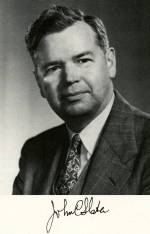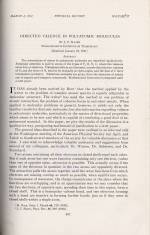|
Then came a shock. On March 1 — two weeks after Pauling submitted his new work but
a month before it was published — a paper appeared in the Physical Review that covered
much of the same ground, including the idea of maximum overlapping of wave functions
to create the most stable bonds; a discussion of the relationship between ionic and
covalent bonds; a description of how, in compounds where there are several ways of
drawing valence bonds, it was likely that "the real situation is . . . a combination
of the various possibilities, and on account of resonance the energy is lower than
it would otherwise be"; and, most important, an explanation of the tetrahedral bond
in carbon. The author was John Slater, the young physicist whose work had helped to
inspire Pauling's breakthrough.
It looked at first as though Slater had beaten Pauling. But after reading it several
times, Pauling found some important differences in their work. Slater's paper, for
one thing, was more descriptive than quantitative; it did not provide a way to get
hard numbers for bond strengths and lengths. Pauling dashed off a note to the Physical
Review calling readers' attention to his JACS paper's "very simple but powerful approximate
quantitative treatment of bond strengths," briefly sketching his six rules, and stressing
that it was he who had first put forward the quantum-mechanical approach to tetrahedral
binding in 1928. (Slater had not referred to Pauling's earlier paper in his own work.)
Pauling then quickly reviewed Slater's work and pointed out ways in which his own
ideas went further.
|
|
Click images to enlarge

Portrait of John C. Slater, 1952.

Directed Valence in Polyatomic Molecules. March 1, 1931.
"One could say that Pauling's 'failure' was to plant a lot of seeds, basic ideas,
without working them out fully.... As soon as Slater gets an idea he works it out
to the end before he gets a new one. But that is also dangerous, of course because
you look at the trees and you don't see the forest...[Pauling] looks at the forest
and lets other people...work out the specific individual things in detail; he has
a terrifically lively intellect, reading [Pauling's] paper, the information here is
just tremendous, the ideas flow out of the pen, and there are several lifetimes of
work...to be done."
|

